Heinemann’s Hot Rod Was Diminutive in Stature But Still Hugely Capable
Author’s note: This is the first of a multiple-part series on the Douglas A-4 Skyhawk. This piece focuses on the American utilization of the Scooter. A second piece will highlight the many foreign users. Skyhawks forever!
Small For a Good Reason
When renowned aerospace designer Ed Heinemann of Douglas drew the Skyhawk, he would be replacing one of the largest single-engine propeller-driven fighter-bombers ever built with what turned out to be one of the smallest, lightest attack jets ever. Designed for reduced weight and complexity, his Hot Rod ended up with a delta wingspan so small (just a shade over 26 feet) that the A-4 never needed folding wings.
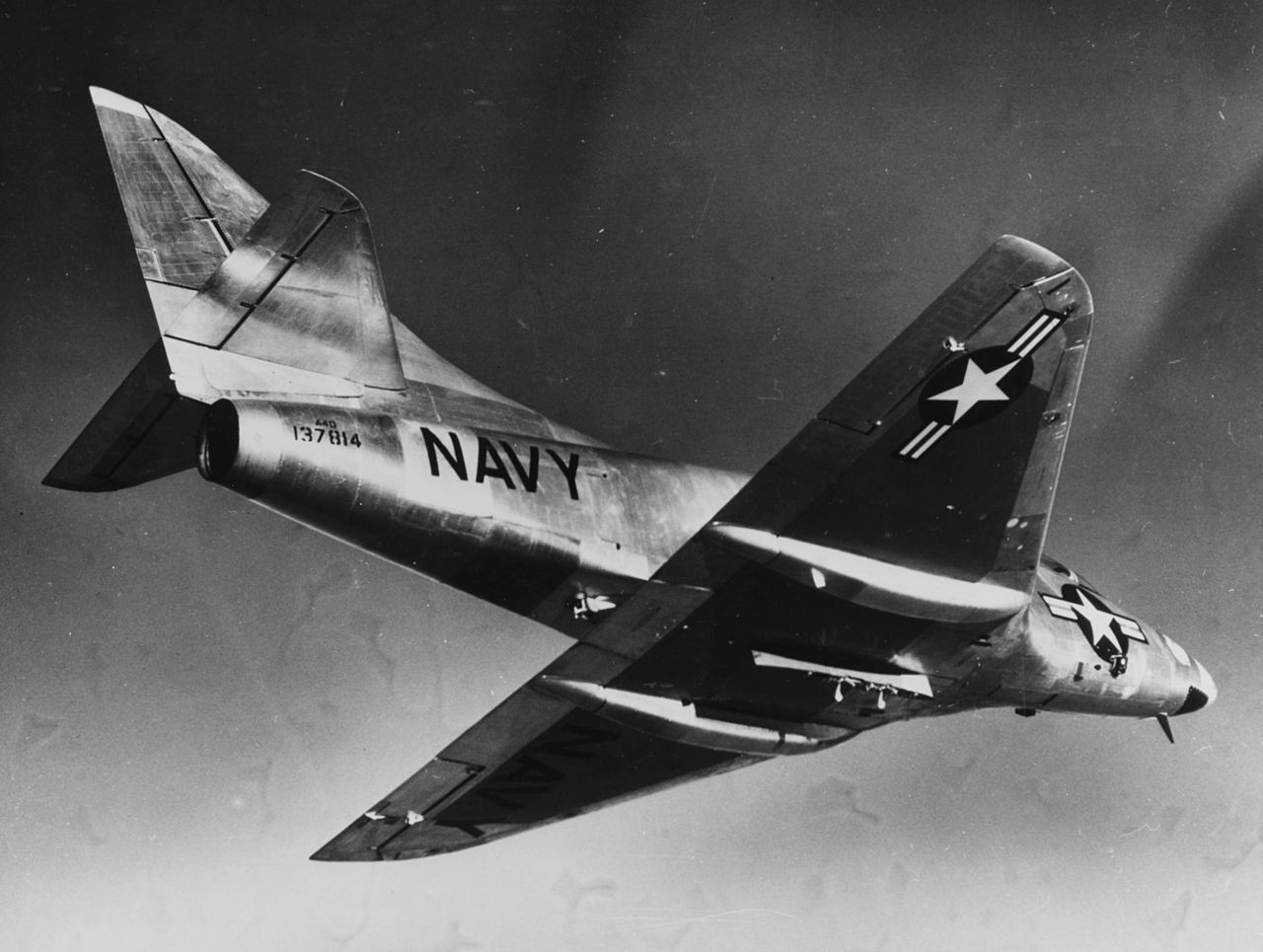
First to Fly
The first A-4s to enter service with the United States Navy were designated A4D-1 (later A-4A) and went to Attack Squadron SEVEN TWO (VA-72) Blue Hawks at Naval Air Station (NAS) Quonset Point in Rhode Island on 26 September 1956. Soon thereafter, All Weather Fighter Squadron THREE (VF[AW]-3) Blue Nemesis at NAS Moffett Field took delivery of the first west coast A-4As. The first Marine Corps outfit to fly A-4As was Marine Attack Squadron TWO TWO FOUR (VMA-224) Bengals at Marine Corps Air Station (MCAS) El Toro in California.

Sometimes a B is Better Than an A
The A4D-2 (later A-4B) entered the fleet starting in 1957. It featured a stronger, externally braced rudder design, which alleviated some flutter issues with the A4D-1’s rudder. Other improvements to the second-generation Tinker Toy jet included strengthened landing gear, a probe for air-to-air refueling, the ability to carry external fuel tanks and a buddy refueling pod, additional navigation equipment, and a radar altimeter. The ordnance delivery systems were also improved.

Building a Better Scooter
Entering service with VMA-225 Vagabonds in February 1960, the A4D-2N (later A-4C) was intended to receive a more powerful and economical engine; however, the budget didn’t support this upgrade. Instead, the third-generation Skyhawk received an autopilot and all-attitude gyro system, an angle of attack (AOA) indexer, terrain clearance radar, and a revised nose in which to mount them, along with a low-altitude bombing system. Many A-4Cs were upgraded later to A-4L specifications and flown primarily by Naval Reserve units.
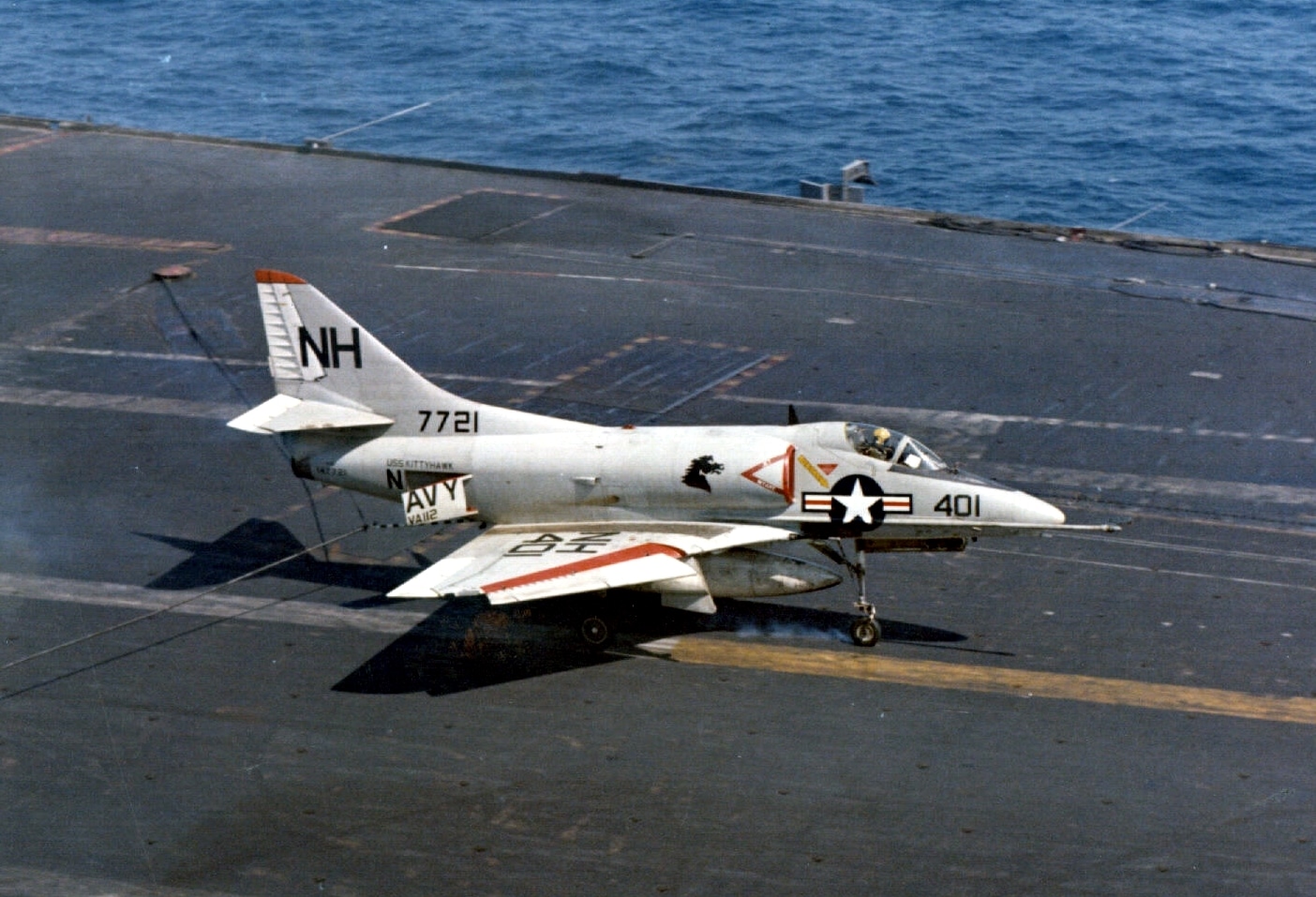
The Scooter That Never Was
In 1958, Douglas proposed the A4D-4. Essentially, the design was a significantly enlarged A-4C with revised (conventional) swept wings and empennage and a bubble canopy. This Skyhawk variant was envisioned as a dedicated long-range, all-weather jet capable of delivering “special weapons” from seven underwing hardpoints at low altitude and high speed. The A4D-4 would have required folding wings, and the design incorporated drag-reducing anti-shock pods. The design never got off the drawing board.

An Even Better Scooter
When the A-4E (briefly designated A4D-5) variants began reaching fleet units in January 1963, Douglas had added two additional underwing hardpoints for carrying ordnance, bringing the total to five. It also included a Doppler navigation radar, a targeting computer, and a more powerful Pratt & Whitney J52-P6A turbojet engine. A-4E intakes were enlarged and modified for better airflow to the engine.
The newest Skyhawk variant was also equipped to deliver the latest guided weapons then entering service, such as the Martin Marietta AGM-12 Bullpup air-to-ground missile and the Naval Weapons Center AGM-45 Shrike antiradar missile for suppression of enemy air defenses (SEAD).
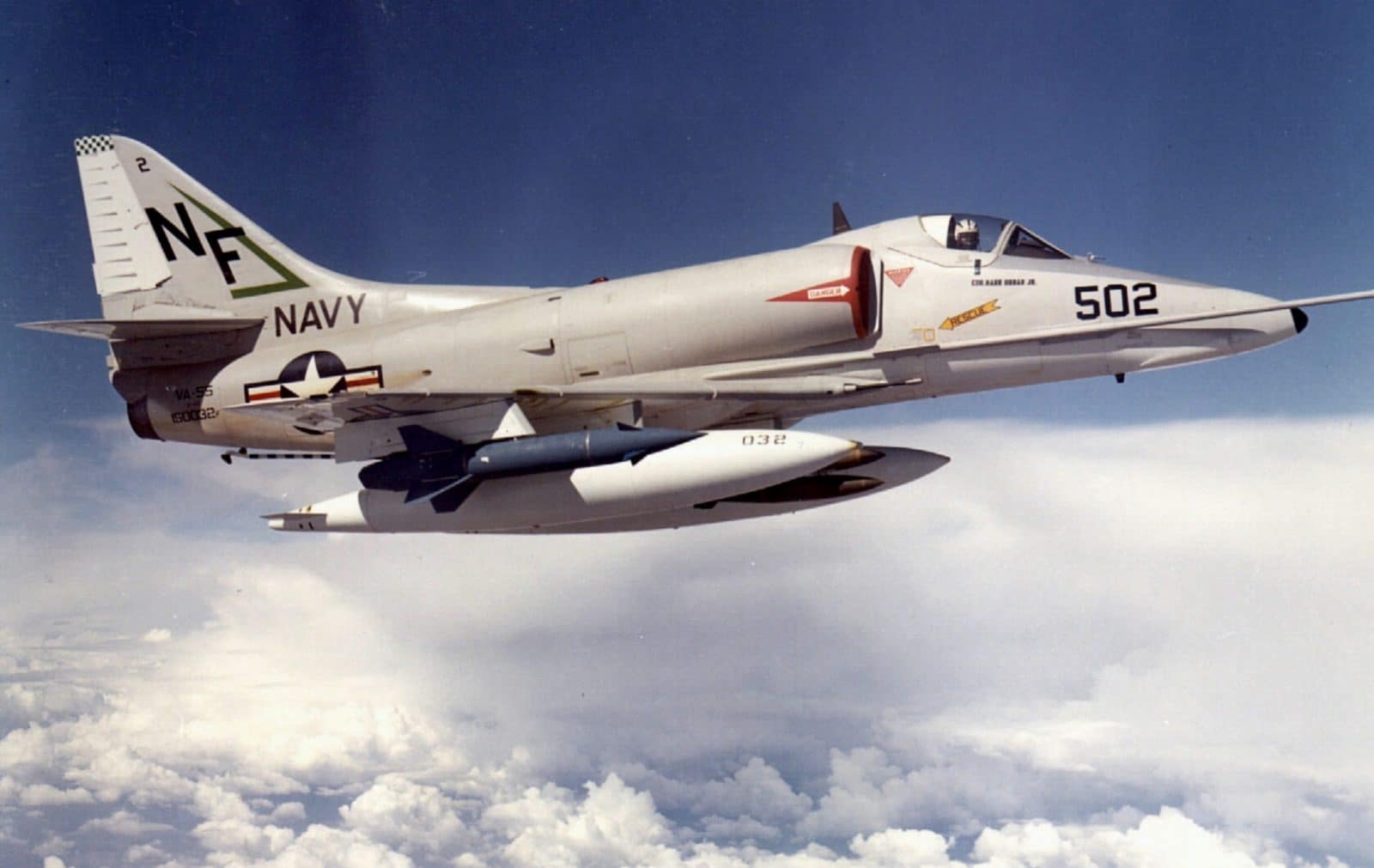
The Scooter That Never Was Redux
The A4D-6 was a 1963 Douglas proposal for an enlarged/upscaled and considerably more powerful Skyhawk built around the Pratt & Whitney TF30 turbofan engine. Yes…the same engine as would initially power the F-14 Tomcat. Overall, airframe improvements were designed to enable the jet to carry a heavier payload over a longer range. This was another design that never left the drawing board. However, Douglas did revise the proposal to compete for the new light attack or VAL competition (which was eventually won by Vought’s A-7 Corsair II).
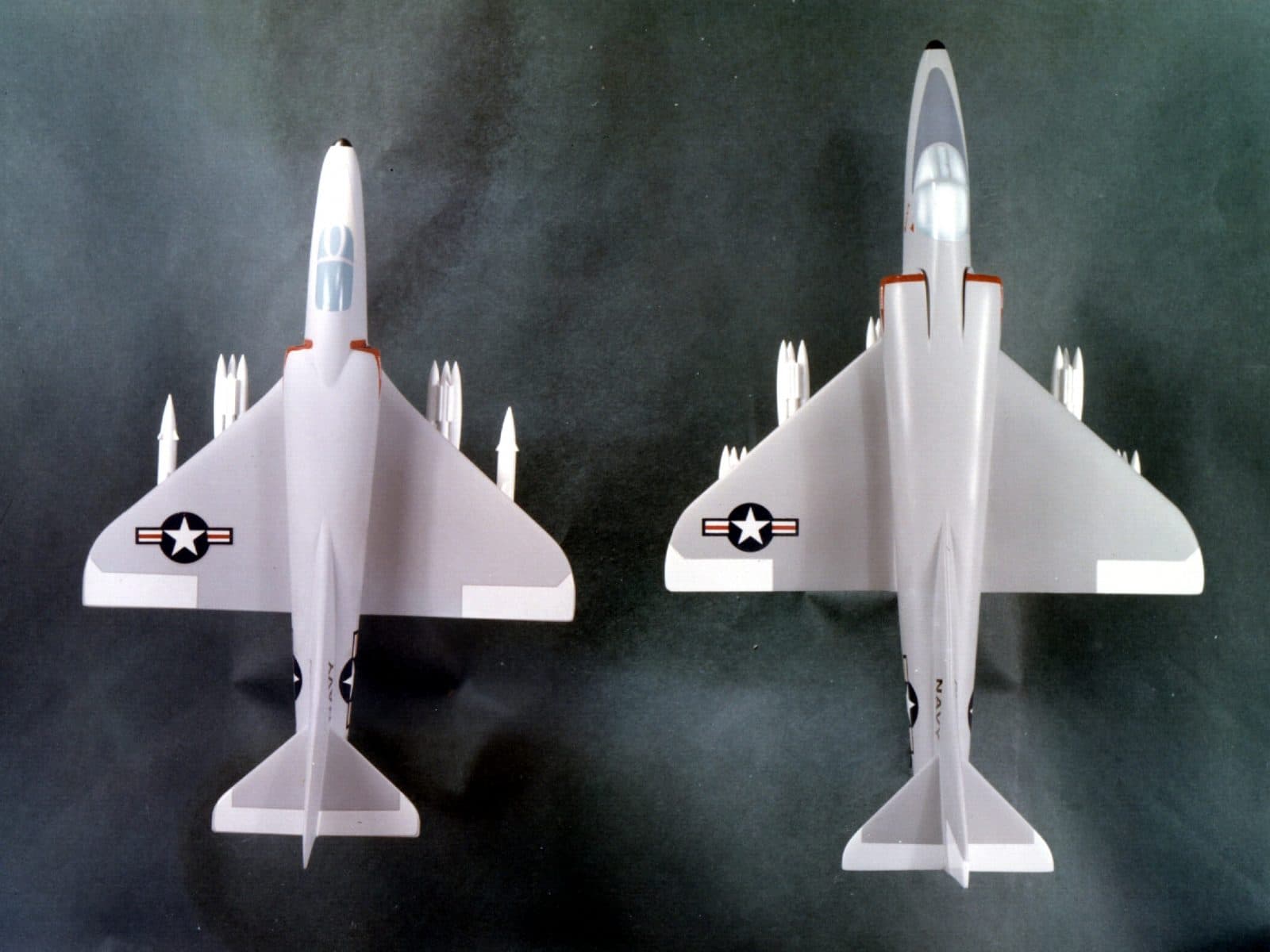
The First Humpbacked Scooter
The new A-4F began serving with fleet units in 1967. The A-4E and A-4F were externally and internally similar, with a couple of early deltas. The avionics humpback was initially unique to the Foxtrot but was often retrofitted to the Echo and A-4Ls as well. The A-4F did receive nosewheel steering, lift-improving wing spoilers, and an upgraded ejection seat. A J52-P8A/P8B engine provided an incremental power increase. The refueling probes on the A-4Fs were revised to place the plug further outboard, away from nose-mounted radar. A-4Es were also retrofitted with the curved probe. The Blue Angels flew slightly modified A-4Fs from 1974 to 1986.
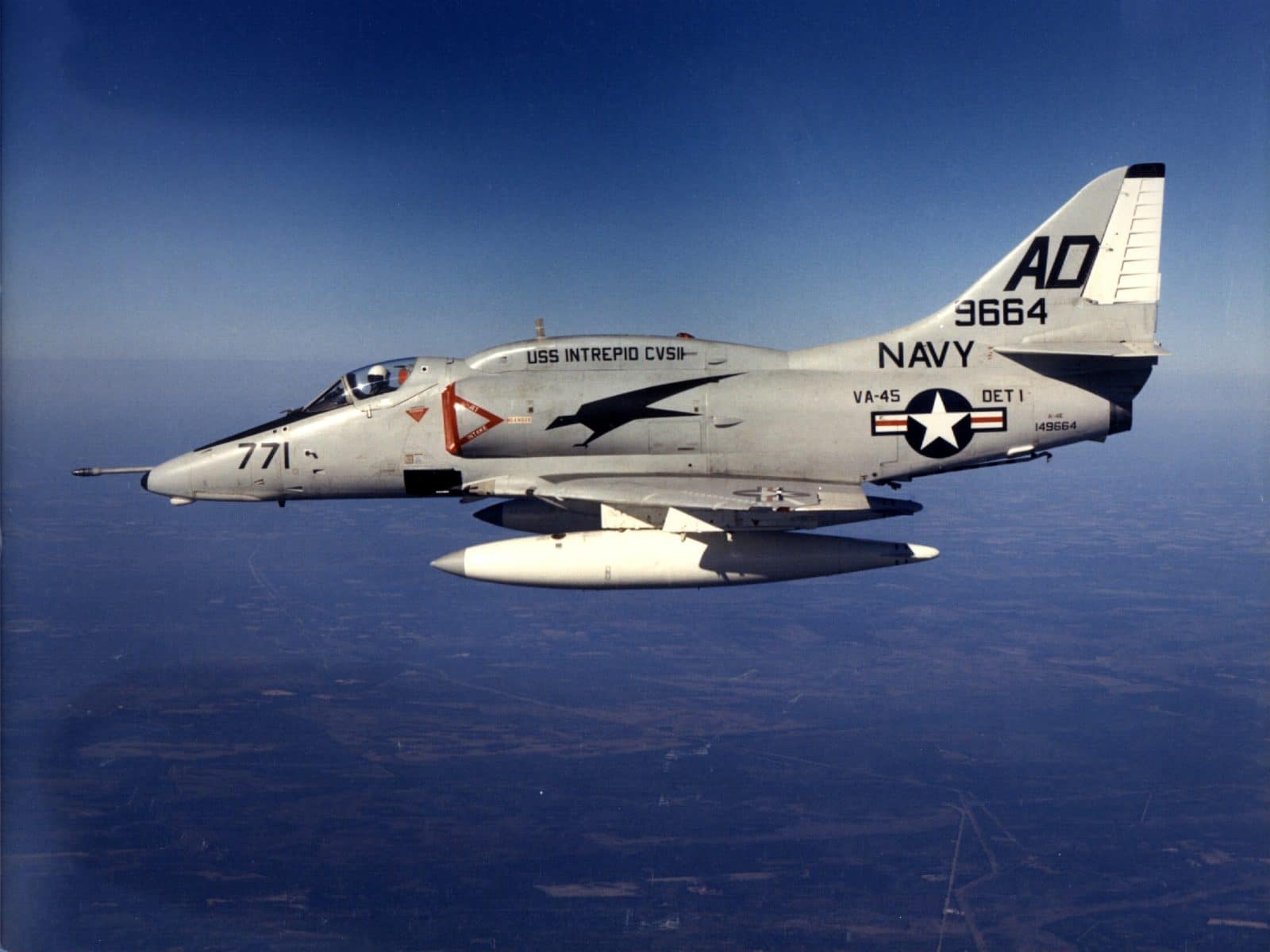
The Scooter as a Fighter?
In the skies over Vietnam, A-4s often sighted North Vietnamese MiG-17s. On paper, the MiG-17 and the A-4 were in general similar in many respects. Even so, the rules of engagement and primary focus on attack work, as opposed to fighter work, meant that few A-4 pilots ever saw MiGs in their sights. Several A-4s fell to the marauding MiGs, but on 1 May 1967, VA-76 Spirits pilot Lieutenant Commander Theodore Swartz was attacking Kep airfield and managed to shoot down a MiG-17…with a 5-inch Zuni unguided rocket!
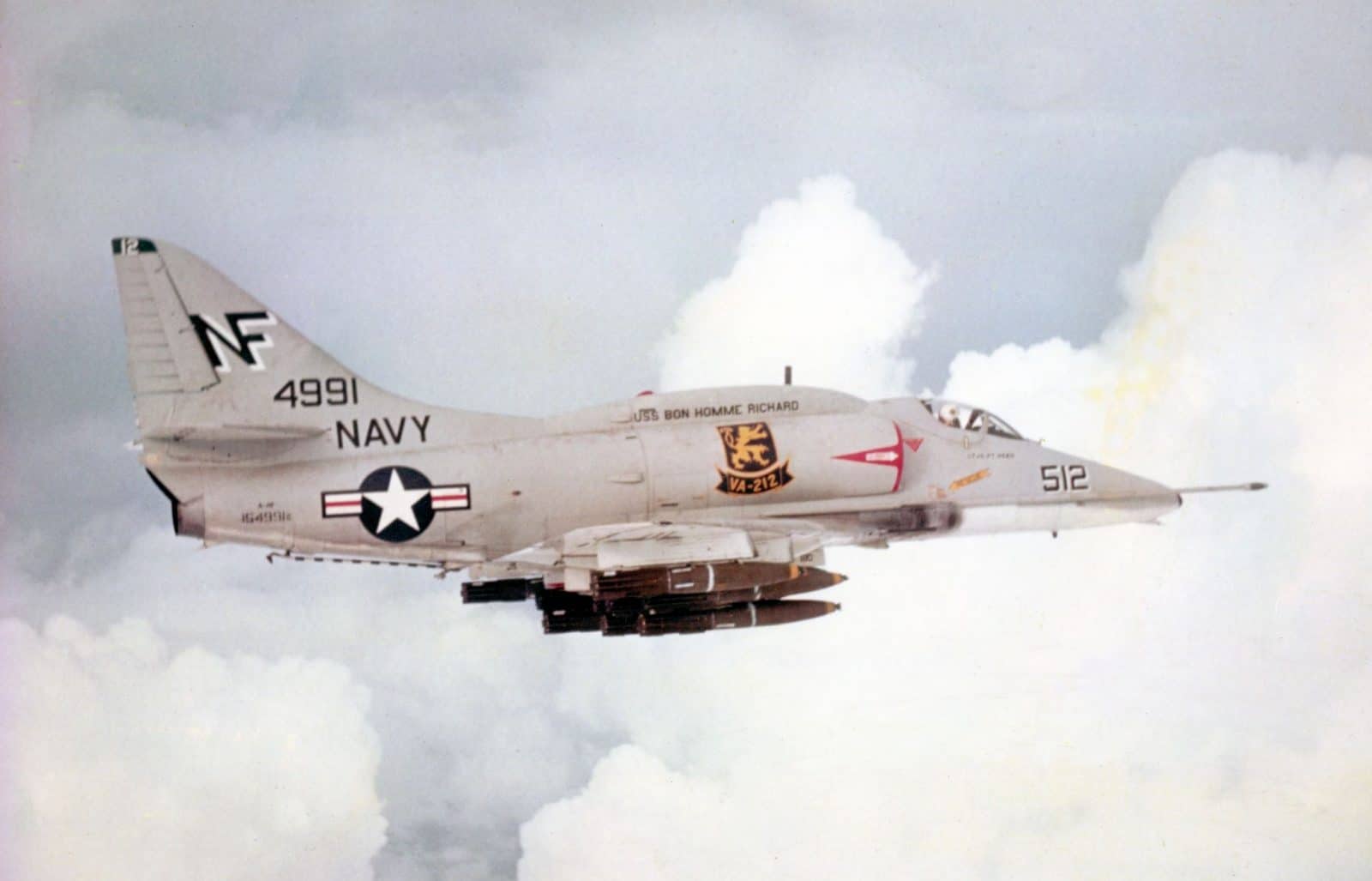

Used to great effect by the Argentinians in the Malvinas (Falklands) canpaign
Good article, but spoilers don’t increase lift, they kill lift. You must have been referring to the leading edge aerodynamic slats.
Just to share in the rich history of the A4 that I remembered when RSAF A-4SU Super Skyhawks made their “last flight” in Singapore on 31 March 2005.
https://acesflyinghigh.wordpress.com/2018/07/21/singapores-double-bubble-super-skyhawk/
https://military.wikia.org/wiki/ST_Aerospace_A-4SU_Super_Skyhawk
https://commons.wikimedia.org/wiki/Category:A-4SU_Super_Skyhawk
Was an A4 powerplant mechanic at Topgun, VMA 311, and was a hamster at MAG 13.
[…] the elite Navy and Marine Corps demonstration team has changed aircraft since it moved from the A-4F Skyhawk II to the Hornet back in […]
[…] When renowned aerospace designer Ed Heinemann of Douglas drew the A-4 Skyhawk, he would be replacing one of the largest single-engine propeller-driven fighter-bombers ever built with what turned out to be one of the smallest, lightest attack jets ever. Designed for reduced weight and complexity, his Hot Rod ended up with a delta wingspan so small (just a shade over 26 feet) that the A-4 never needed folding wings… read more > […]